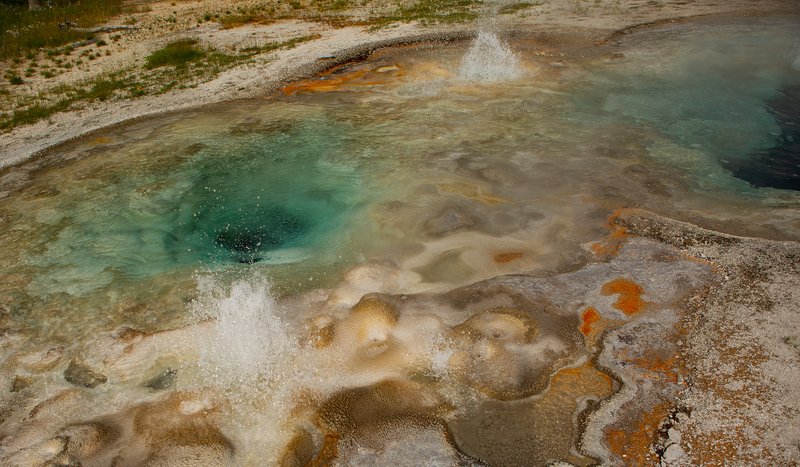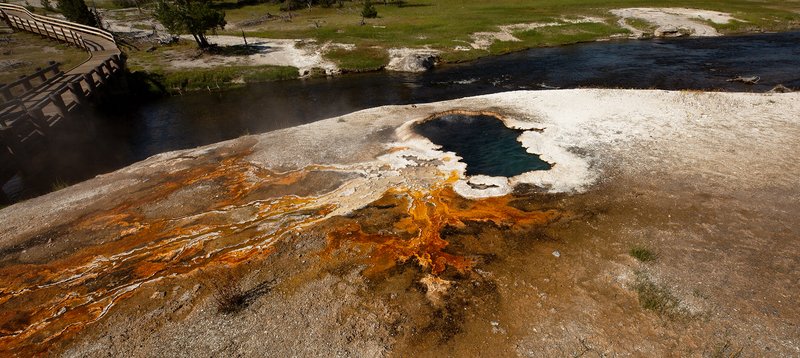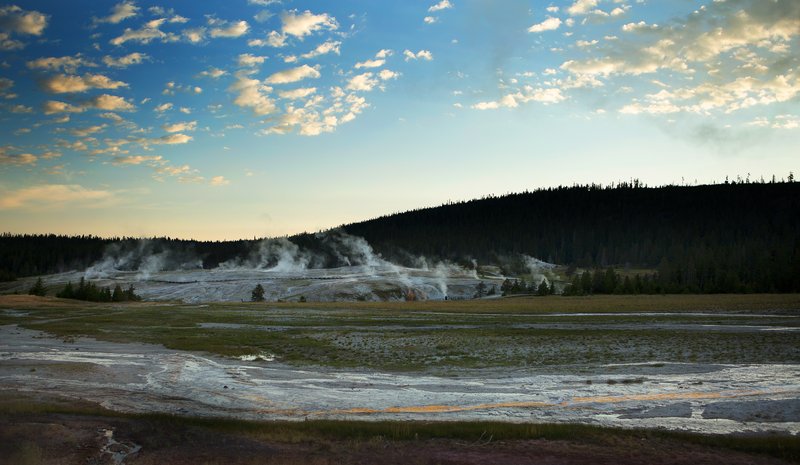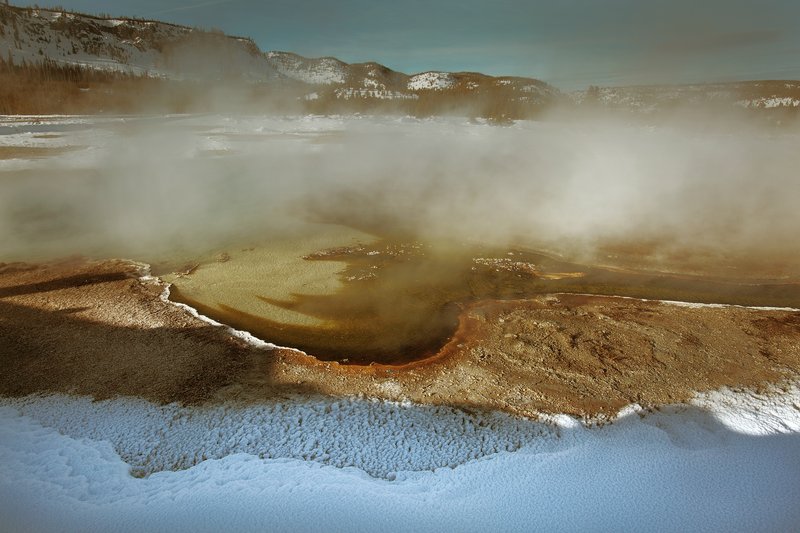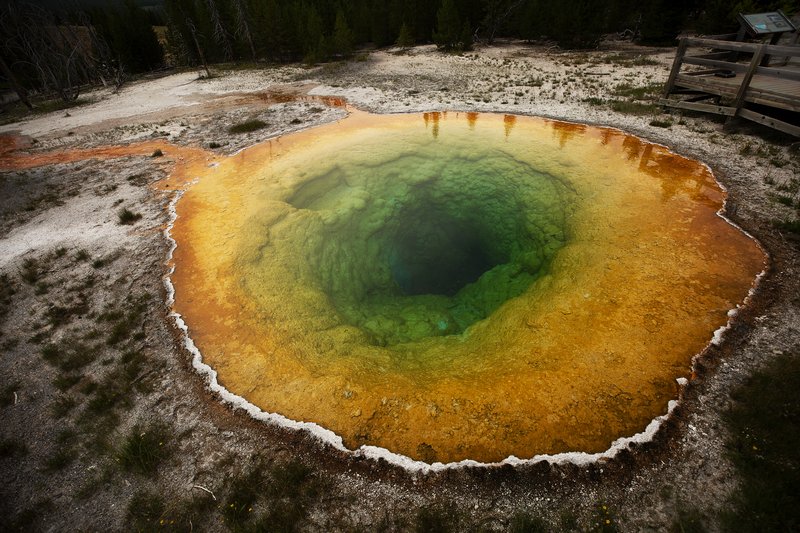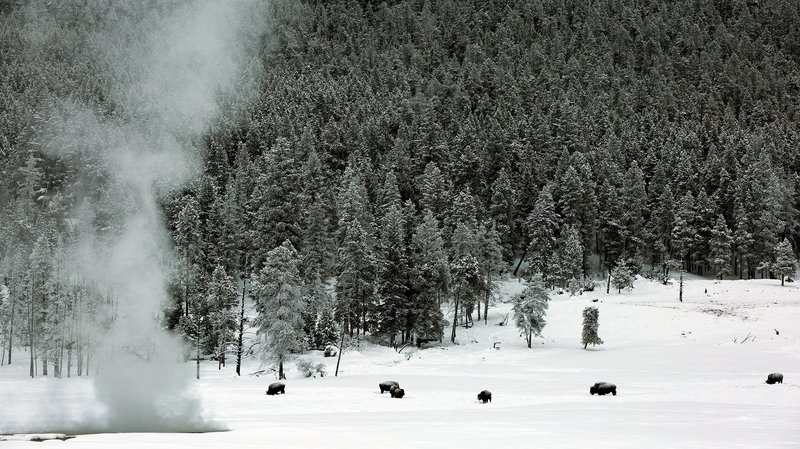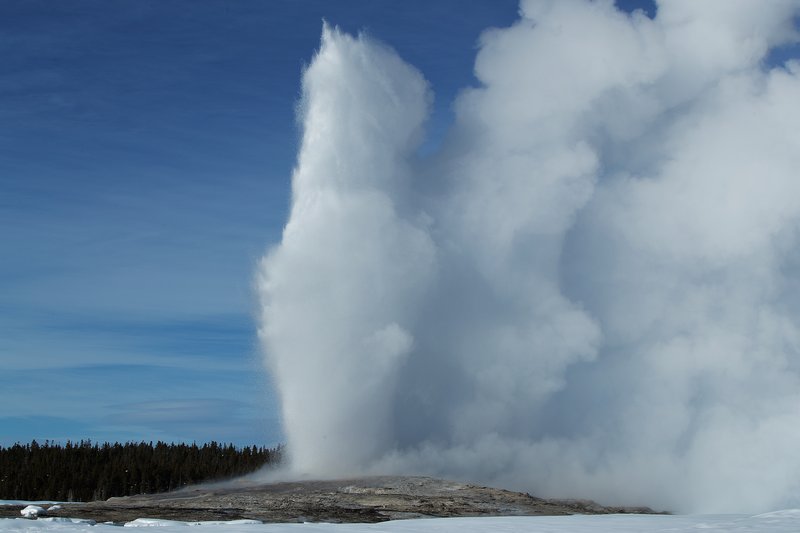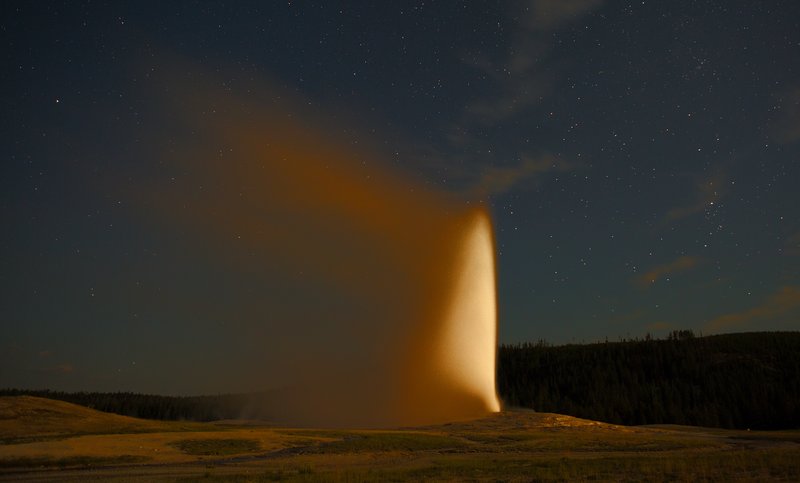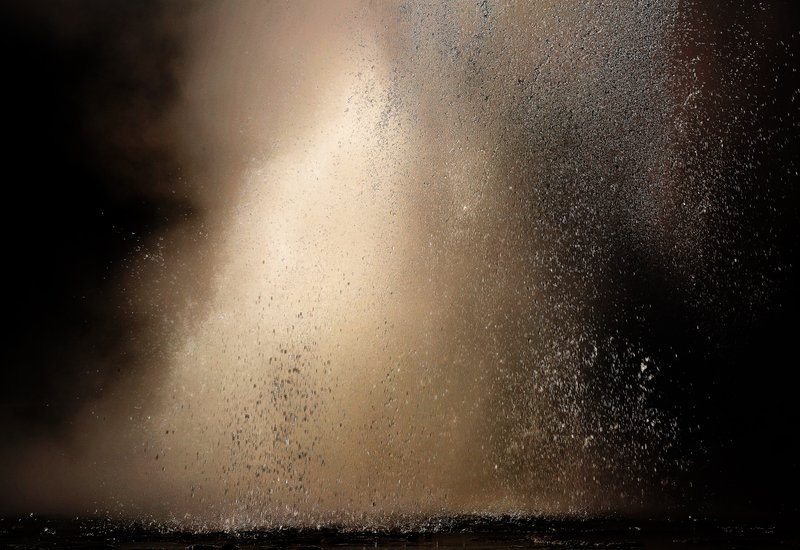Yellowstone
Yellowstone is an extremely popular National Park. The roads and attractions will be crowded and the accommodations expensive except during the winter. In winter, there are numerous more affordable options, but access to some areas at higher elevations will be limited.
Yellowstone National Park
On March 1, 1872, Yellowstone became the first national park. About half of the world’s active geysers are within its current 2.2 million acres boundaries. For thousands of years before that Native Americans lived off the land and used it’s thermals for religious and medicinal purposes. There are currently 27 tribes affiliated with the park and federal law requires the National Park Service to consult with them on a government-to-government basis on decisions which affect significant resources. In 2016, the Blackfoot Nations requested the park change the names of Mount Doane to “First People’s Mountain” and Hayden Valley to “Buffalo People’s Valley.”
Almost five million people visit Yellowstone annually. In spite of this, Yellowstone, unlike many other popular national parks, does not limit entry or require permits to visit popular sites or trails. I try to avoid Yellowstone during the summer months, as the overpriced lodges are filled to capacity and the pullouts are full of RVs, buses and endless waves of tourists. Much of the park’s wildlife moves to higher elevations during the summer months, while the rest cause regular onlooker delays along the park’s roads.
I consider paying $300+ a night for a simple room in a park lodge to be ridiculous and shameful. Unfortunately, it is the only realistic way to be in the park to photograph night skies and early morning light if you don’t own an RV. The last time I stayed in the park during the summer was in 2017 and Inspiration Point and Inspiration Point Road were closed, The North Rim Trail between Grand View Point and Inspiration Point, between Cascade Falls and the Brink of Lower Falls and between Grand View Point and Inspiration Point were also closed. Uncle Tom's Point and Parking Area, Uncle Tom's Trail and the entire South Rim Trail were closed as well. There were also long delays and nightly closures on Grand Loop Road from Upper Terrace Loop Drive to Norris Junction. If a bison happened onto the road, the delays were longer, but much more entertaining. Details aside, it was a mess.
Fortunately, Yellowstone is vast and even in summer I can find isolation in the early mornings, late evenings and during the night. I can join the pre-dawn community of wolf watchers at Alum Creek and be the only person watching Old Faithful by moonlight at 1:30 a.m. July is also the time for wildflowers in Yellowstone and most hiking trails are practically abandoned at sunrise. And, it's Yellowstone, so no amount of aggravation can make it totally unbearable.
For five months every year beginning in mid-November, the roads in Yellowstone National Park are snow packed and open only to foot traffic, snowmobiles and a variety of snowcoach configurations. This includes two 1953 Bombardiers, descendants of the original 1939 Canadian Snowbus patented by J. Armand Bombardier, that resemble elongated red lady bugs.
These days access by motorized vehicles is strictly controlled. The current guidelines allow for 110 ‘transportation events’ daily, defined as one snowcoach or a group of up to 10 snowmobiles. Up to 50 transportation events may be groups of snowmobiles. When I last visited during the winter, temperatures ranged from -16 to 28 °F and snow conditions varied from large delicate flakes to whiteout conditions that limited mobility and access. The scenery was stunning, although the serenity was too often interrupted by parades of snowmobiles.
Bison are the most visible mammal species in the park and also a source of controversy. On February 2, 2017, Montana Gov. Steve Bullock lifted a temporary ban on the plan to kill up to 1,300 of the park’s 5,500 bison that had been in place to protect bison that migrate out of the park. The slaughter is intended to prevent bison from transmitting brucellosis to cattle, although no transmission from wild bison to livestock has ever been recorded. An agreement signed in 2000 by the state and the federal government set a population goal of 3,000 bison in the park. A bison eats about 24 pounds of forage a day and there are approximately 85,000 acres of grassland in the park, so a lack of food isn’t the reason for maintaining the population at that level. Even though the harvested meat feeds local indigenous communities, it’s difficult to rationalize culling the park’s wild herd when there is plenty of meat raised on the surrounding bison ranches.
Although the park is home to ten packs of wolves and between 300-600 brown bears, most of the photographs you’ll see of those species are taken at the Grizzly & Wolf Discovery Center in West Yellowstone, adjacent to the park’s western gate. Most photo tours spend a morning at the Center, where pairs of bears are rotated through display areas for feeding and photographers hope for heavy snow that will obscure background fences from being visible in their pictures. There’s nothing ethically wrong with photographing captive or baited animals, but it often results in a credibility issue when those photographs are published without a disclaimer. The Center is a worthy non-profit with an excellent museum, just not a place to photograph realistic animal behaviors.
Within the park, it’s easier to track wolves in the winter when their tracks are frozen into the snow, but all of the brown bears are hibernating. Yellowstone has a sordid past in bear management. For almost a century, beginning in the late 1800’s, brown bears gathered at night before bleachers packed with tourists to feed on garbage in open pit dumps behind park hotels. And, until the 1960s, visitors were allowed to feed begging opportunistic black bears along park roads. This practice continued until 1970.
The park is a much different place today and during the winter you only have to share it with 500-1,000 people a day, compared to July when almost 30,000 people visit the Park daily. Considering that the Park contains 3,472 square miles and all except the highest passes are open, that means that each winter visitor has an average of at least 347 square miles to him or herself. That’s a lot of real estate to explore in the world’s oldest national park.
If you consider that every one of the five millions people who visit Yellowstone annually takes a lot of photographs, you can appreciate the challenge of being original. It’s a challenge I cherish and work hard to fulfill.
Yellowstone National Park
On March 1, 1872, Yellowstone became the first national park. About half of the world’s active geysers are within its current 2.2 million acres boundaries. For thousands of years before that Native Americans lived off the land and used it’s thermals for religious and medicinal purposes. There are currently 27 tribes affiliated with the park and federal law requires the National Park Service to consult with them on a government-to-government basis on decisions which affect significant resources. In 2016, the Blackfoot Nations requested the park change the names of Mount Doane to “First People’s Mountain” and Hayden Valley to “Buffalo People’s Valley.”
Almost five million people visit Yellowstone annually. In spite of this, Yellowstone, unlike many other popular national parks, does not limit entry or require permits to visit popular sites or trails. I try to avoid Yellowstone during the summer months, as the overpriced lodges are filled to capacity and the pullouts are full of RVs, buses and endless waves of tourists. Much of the park’s wildlife moves to higher elevations during the summer months, while the rest cause regular onlooker delays along the park’s roads.
I consider paying $300+ a night for a simple room in a park lodge to be ridiculous and shameful. Unfortunately, it is the only realistic way to be in the park to photograph night skies and early morning light if you don’t own an RV. The last time I stayed in the park during the summer was in 2017 and Inspiration Point and Inspiration Point Road were closed, The North Rim Trail between Grand View Point and Inspiration Point, between Cascade Falls and the Brink of Lower Falls and between Grand View Point and Inspiration Point were also closed. Uncle Tom's Point and Parking Area, Uncle Tom's Trail and the entire South Rim Trail were closed as well. There were also long delays and nightly closures on Grand Loop Road from Upper Terrace Loop Drive to Norris Junction. If a bison happened onto the road, the delays were longer, but much more entertaining. Details aside, it was a mess.
Fortunately, Yellowstone is vast and even in summer I can find isolation in the early mornings, late evenings and during the night. I can join the pre-dawn community of wolf watchers at Alum Creek and be the only person watching Old Faithful by moonlight at 1:30 a.m. July is also the time for wildflowers in Yellowstone and most hiking trails are practically abandoned at sunrise. And, it's Yellowstone, so no amount of aggravation can make it totally unbearable.
For five months every year beginning in mid-November, the roads in Yellowstone National Park are snow packed and open only to foot traffic, snowmobiles and a variety of snowcoach configurations. This includes two 1953 Bombardiers, descendants of the original 1939 Canadian Snowbus patented by J. Armand Bombardier, that resemble elongated red lady bugs.
These days access by motorized vehicles is strictly controlled. The current guidelines allow for 110 ‘transportation events’ daily, defined as one snowcoach or a group of up to 10 snowmobiles. Up to 50 transportation events may be groups of snowmobiles. When I last visited during the winter, temperatures ranged from -16 to 28 °F and snow conditions varied from large delicate flakes to whiteout conditions that limited mobility and access. The scenery was stunning, although the serenity was too often interrupted by parades of snowmobiles.
Bison are the most visible mammal species in the park and also a source of controversy. On February 2, 2017, Montana Gov. Steve Bullock lifted a temporary ban on the plan to kill up to 1,300 of the park’s 5,500 bison that had been in place to protect bison that migrate out of the park. The slaughter is intended to prevent bison from transmitting brucellosis to cattle, although no transmission from wild bison to livestock has ever been recorded. An agreement signed in 2000 by the state and the federal government set a population goal of 3,000 bison in the park. A bison eats about 24 pounds of forage a day and there are approximately 85,000 acres of grassland in the park, so a lack of food isn’t the reason for maintaining the population at that level. Even though the harvested meat feeds local indigenous communities, it’s difficult to rationalize culling the park’s wild herd when there is plenty of meat raised on the surrounding bison ranches.
Although the park is home to ten packs of wolves and between 300-600 brown bears, most of the photographs you’ll see of those species are taken at the Grizzly & Wolf Discovery Center in West Yellowstone, adjacent to the park’s western gate. Most photo tours spend a morning at the Center, where pairs of bears are rotated through display areas for feeding and photographers hope for heavy snow that will obscure background fences from being visible in their pictures. There’s nothing ethically wrong with photographing captive or baited animals, but it often results in a credibility issue when those photographs are published without a disclaimer. The Center is a worthy non-profit with an excellent museum, just not a place to photograph realistic animal behaviors.
Within the park, it’s easier to track wolves in the winter when their tracks are frozen into the snow, but all of the brown bears are hibernating. Yellowstone has a sordid past in bear management. For almost a century, beginning in the late 1800’s, brown bears gathered at night before bleachers packed with tourists to feed on garbage in open pit dumps behind park hotels. And, until the 1960s, visitors were allowed to feed begging opportunistic black bears along park roads. This practice continued until 1970.
The park is a much different place today and during the winter you only have to share it with 500-1,000 people a day, compared to July when almost 30,000 people visit the Park daily. Considering that the Park contains 3,472 square miles and all except the highest passes are open, that means that each winter visitor has an average of at least 347 square miles to him or herself. That’s a lot of real estate to explore in the world’s oldest national park.
If you consider that every one of the five millions people who visit Yellowstone annually takes a lot of photographs, you can appreciate the challenge of being original. It’s a challenge I cherish and work hard to fulfill.
